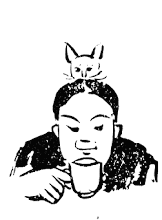王敦
为迷人而迷人:林语堂的北平
林语堂〈迷人的北平〉,见于姜德明 编的《北京乎》(北京:三联书店,1992),507-515。
林语堂的文章为幽默而幽默,为性灵而性灵,也为迷人而迷人。这个“为”出来的迷人可以从林氏《迷人的北平》一文看出来。且看开头第一段:
北平和南京相比拟,正像西京和东京一样。北平和西京都是古代的京都,四周是环绕着一种芬芳和带历史性的神秘的魔力。那些在新都,南京和东京,是见不到的。南 京(一九三八以前)和东京一样,代表了现代化的,代表进步,和工业主义,民族主义的象征;而北平呢,却代表旧中国的灵魂,文化和平静;代表和顺安适的生活,代表了生活的协调,使文化发展到最美丽,最和谐的顶点,同时含蓄着城市生活及乡村生活的协调。
第一句话有些发虚发飘。推测上下文意,可以改为“北平和南京相比拟,正像西京和东京一样,充满对比。”或者“北平和南京的对比,正像西京和东京一样。”虚飘的原因在于,当林氏写下“比拟”两个字的时候,他可能自己也知道如此的“对比”不能当真。
此段的第二句话要把中国的北平比做日本的西京(京都)。不用说也明摆着,北平和西京“都是古代的京都” ,这没错。然而二者究竟如何才算神似?林语堂说不出来了,只好说“四周是环绕着一种芬芳和带历史性的神秘的魔力”。这是故弄玄虚,在语法结构上也欠佳。因为没有实实在在的语言图像来再现北平或西京的样子,所以他笔下“芬芳和带历史性的神秘的魔力”既不属于北平,也不属于西京,只代表着林氏本人对“迷人”的 追求。
在林文此段的第三句话里,林氏把南京(一九三八以前)和东京归为一类,“代表了现代化的,代表进步,和工业主义,民族主义的象征”。这很牵强。且不说南京当时的现代化和工业主义比日本的东京差得太远,南京就是跟临近的大上海相比,也被公认为“乡下”。在一般人眼里,南京生活的宁静正好对比着上海的繁华喧嚣。对当时南京的党国要人来说,南京是办公的地方,安稳的六朝古都;上海才是现代大都会,“东方的巴黎”。(不过话说回来,我毕竟没有在三、四十年代生活过。 照国民党元老回忆,南京政府机关,在抗战之前,确实有一股紧张活泼,奋发向上的气氛。年青职员,不敢涉足舞厅,赌场,周末下馆子都有顾虑。大家把上海当成腐败的地方,从这个意思上说南京也没准儿一度象征着“主义”与“进步”。)
林语堂写此文的时候应该是“一九三八”抗日 战争爆发和南京沦陷以后。这篇文章是收在一九四一年上海人间书屋出版的《语堂随笔》。当时,包括北平和南京在内的众多名城都在日寇的铁蹄之下呻吟。(南京大屠杀之事,不知当时的国人是否已经知道?)能“随”出这样的“笔”来,拿北平比日本京都,拿南京比日本东京,确实别具一格。
其实也不必对林语堂过于苛责。他可能只是觉得北平南京的“南北”,正好可以配东京西京的“东西”,煞是迷人。
这种“迷人”是禁不住细看的,还是在第一段里——如果你问林语堂:文化发展“最美丽,最和谐的顶点”到底是什么样子?“城市生活及乡村生活的协调”的具体表现是什么?他很可能也不知道。
以上是对林文第一段的分析。
林氏此文一共二十七段,每一段都是这样为了迷人而迷人。如果每一段都分析一下,连语法带逻辑,太累。下面就只从全文正中挑出第十三段,粗略地读一下:
这里也是多色彩的——有旧的色素和新的色素。有王家宏大的,历史时代的,和蒙古平原的色素。蒙古和中国的商人带着骆驼队从张家口和南口来进入这有历史的城 门,有数里相接的城墙,四五十英尺阔的城门。有城楼和鼓楼,那是在黄昏时报告给居民听的。有寺宇,古花园,和宝塔,那里的每一块石头和每一棵树,以及每一座桥都有历史和古迹的。
林氏在此段的第一句话里,提到了“多色彩”——“ 有旧的色素和新的色素”。当然,这个色彩学是个比方,其实是说北京在视觉上即有历史遗存,又有现代场面。然而,在这个主题句后面的四句话里,“新的色素” 完全看不到了。(这跟林语堂的方言有无关系?北京话说得好的人如老舍、梁实秋,可能不会这样写。不过也难说,沈从文一辈子讲不好普通话,但是善于描写地方 景物。把他们两人的文字比一比,可能会有的说。)
读者所看到的都是诸如“王家”、“宏大”、“蒙古平原的色素”、“骆驼队”这样的字眼,还有城墙、城门,城楼鼓楼寺宇古花园宝塔等等古老的建筑与空间。这些 “旧的色素”的运用,在风格上感觉像是意大利歌剧《图兰朵》里的北京城布景,或者像几十年前洋人观光客写给纽约时报的小文,而不像现代中国作家用中文描述的北平。
我真怀疑这篇文章本来是用英文打的底稿,原本是想投合洋人口味的。那个时代每个对中国着迷的洋人到了中国都幻想着自己是踏上这神秘东方的唯一西方人。于是他们眼中的北平就总也离不开马可•波罗为“汗八里”(马可•波罗所称呼的元大都)定下的“色素”。
殊不知,曾经有成千上万的洋大人端着毛瑟枪、来复枪、机关枪、拉着迫击炮、加农炮、榴弹炮,从塘沽一路杀进北京,再大包小包地把宝物都运走。在那段时间里, 这座古城是屠宰场、废墟和匪窝,一点也不迷人。那是在一九零零年。更不用说在之前四十年圆明园就被洋人烧掠一空。“那里的每一块石头和每一棵树,以及每一座桥都有历史和古迹的”。是的。不知从咸丰皇帝以来的事儿算不算历史?林语堂没有说。不过他也建议读者到“避暑山庄(圆明园?)中意大利式宫殿的废墟上去凭吊古迹”。(第二十四段)意大利式宫殿是如何成为废墟的?凭吊哪般古迹?他也没说。连带着,东交民巷的洋房汽车洋兵,六国饭店的繁华,以及属于现在进行时的“新的色素”,也都将“真事隐去”,不去说它了。
从前清的京师到民国的北京、北平,这座城市饱尝了国破家亡的味道,特别是林氏写作此文的时候,北平早已落入日寇手中。“国破山河在,城春草木深。感时花溅泪,恨别鸟惊心。”这样的泪水不会闪烁在洋大人的眼中,在这篇以迷人为目的的随笔里也是没有的。对林语堂来说,泪水也要溅得迷人。于是就有了《京华烟云》。
*****************************************************************************
人,有时会对自己宽,对别人严而不自知。现在回过头来看这篇文章,就觉得写得偏颇了。以此为戒。王敦,2008年4月15日补记。
© Copyright by Dun Wang (王敦). All rights reserved. 著作权拥有者:Dun Wang (王敦)。




